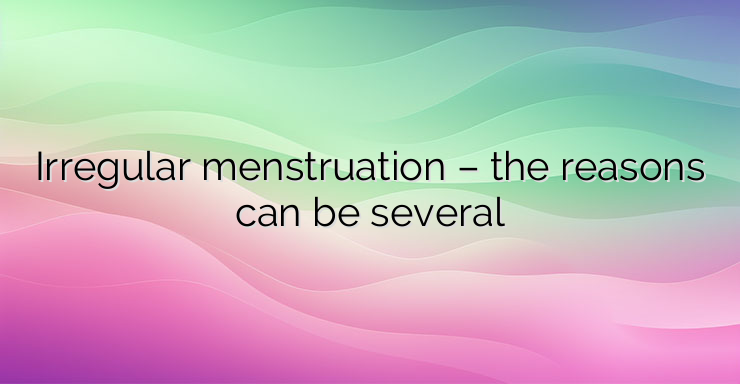Irregular periods aren’t always a sign of a problem, but it’s a good idea to see a doctor to find out what’s causing them. What is irregular menstruation? Irregular menstruation is a complaint in women related to irregularity, delay or complete absence of menstrual cycle. Physiologically, the menstrual cycle lasts between 21 and 35 days for different women, usually 28 days in most cases. Menstrual bleeding lasts an average of four to seven days. After puberty, many women develop a regular cycle with a length between periods of about 28 days. But it’s not unusual for it to vary by a few days each time. A number of factors can cause irregular periods. Most are related to hormone production. The two hormones that influence the menstrual cycle are estrogen and progesterone. These hormones regulate the monthly cycle. Problematic irregular menstruation can manifest itself in a different form: A menstrual cycle that lasts less than 21 or more than 35 days; Prolonged and profuse menstrual bleeding; Amenorrhea (absence of menstruation for more than 90 days); Oligomenorrhea (menstruation occurring at longer intervals); Dysmenorrhea (painful menstruation); Irregular menstrual bleeding can manifest as bleeding between two periods Life cycle changes that affect hormonal balance include puberty, menopause, pregnancy, childbirth and breastfeeding. During puberty, the body undergoes major changes. It can take several years for estrogen and progesterone to reach balance, and irregular menstrual periods are common during this time. Before menopause, women often report irregular and heavy periods. The period of menopause varies differently for all women. Menopause is when 12 months have passed since the last regular period. Use of oral contraceptives can be another cause of irregular periods. Irregular periods can sometimes indicate a health problem, and in some cases, this problem can lead to further complications such as fertility problems. Polycystic ovary syndrome is a condition in which a number of small, fluid-filled sacs known as cysts develop in the ovaries. Women suffering from polycystic ovary syndrome do not ovulate or release an egg every month. Symptoms include irregular or no periods, acne and excessive hair growth. Polycystic ovary syndrome affects between 10% and 20% of women of reproductive age. Cervical cancer or uterine cancer can rarely cause bleeding between periods or during intercourse. Another cause of disturbances in the menstrual cycle can be endometriosis. This is a condition where endometrial cells grow outside the uterus. In other words, the lining on the inside of the uterus is outside it.Ectopic endometrial tissue is not malignant. The disease can be asymptomatic, but it can also present with painful bleeding and lead to other problems. If the released blood gets into the surrounding tissues, it can damage them, causing severe pain, irregular menstrual bleeding and even infertility. Maintaining a healthy lifestyle can help reduce the risk of some causes of irregular periods. This includes regular exercise to maintain a healthy weight, reducing stress and eating a healthy diet. Certain herbs such as rose, licorice root and turmeric are thought to help, but research has not confirmed their effectiveness and they may have adverse effects. Bibliography: Irregular periods – NHS (www.nhs.uk)


Leave a Reply